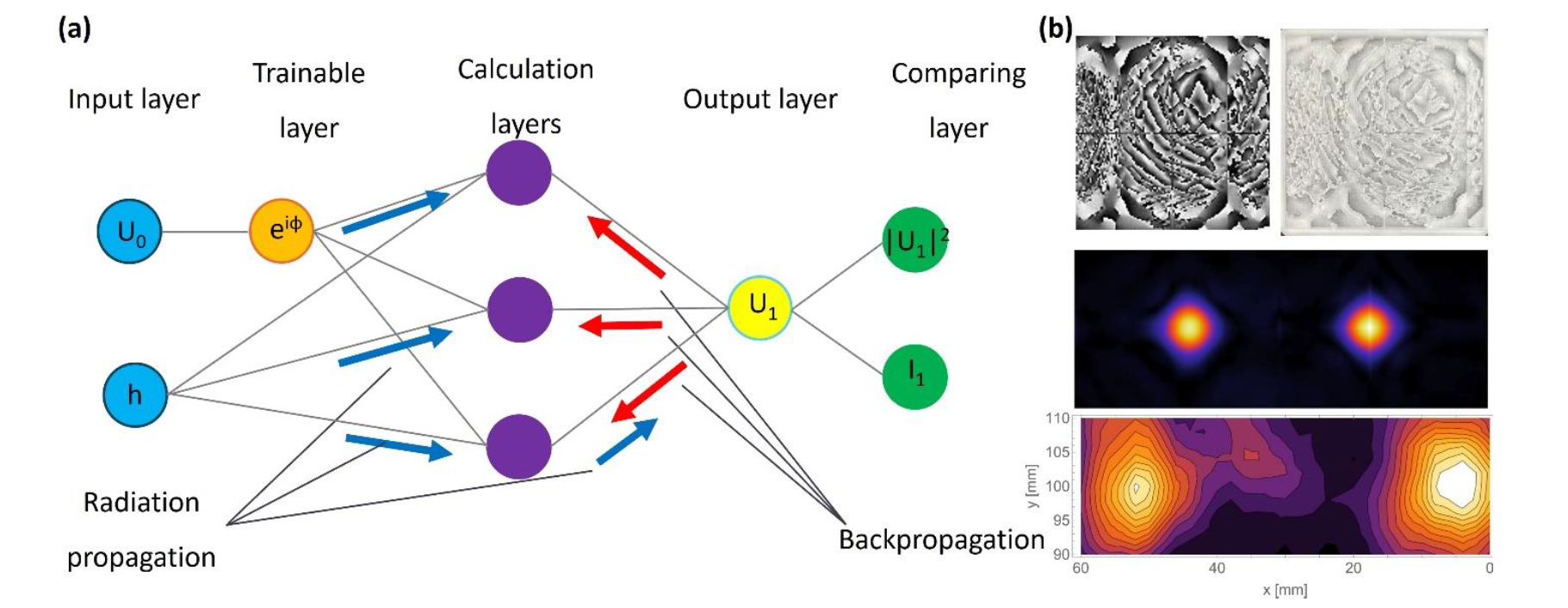| PREVIOUS PRESENTATION | BACK TO PROGRAM OVERVIEW | NEXT PRESENTATION |
Neural network method for the design of terahertz optical components
Paweł Komorowski
Institute of Optoelectronics, Military University of Technology, gen. S. Kaliskiego 2, 00-908 Warsaw, Poland
The fast development of terahertz (THz) physics and its applications encourages the search for efficient methods of shaping and transmitting the THz beams. One of the solutions is to use diffractive optical elements (DOEs), which are thin, lightweight, and can form almost an arbitrary wavefront. Moreover, DOEs for the THz spectral range can often be easily and cost-effectively manufactured by means of additive manufacturing. The 3D printing delivers sufficient resolution for the accurate representation of the details of the DOEs designed for the sub-THz frequencies. At the same time, some of the polymer filaments exhibit outstanding optical properties in this range, allowing for the manufacturing of transparent structures. Neural networks (NNs) have found numerous applications in the last few years, revolutionizing many crucial aspects of industry and everyday life. One of the unique proposals is to apply NNs to the process of designing and optimization of DOEs. A specific NN can emulate the propagation of radiation in free space and its interaction with an optical component, introducing the spatial distribution of the phase delay into the wavefront. In this work, a dedicated NN has been implemented and used for the design of various DOEs operating in the THz spectral range. The proposed NN utilizes the convolution approach to radiation propagation and optimizes the phase map of a DOE through the backpropagation of error using adaptive moment estimation [1]. The scheme presenting the layers of the NN and the dataflow within it is shown in Fig. 1a.

Figure 1: (a) The scheme of the proposed neural network. The blue nodes denote the input layer, where the propagation parameters are defined. The orange node is the trainable layer describing the phase delay matrix of the designed element. The purple nodes are the calculation layers, realizing the propagation of radiation at a given distance. In the output layer (yellow node), the obtained optical field distribution is assembled, which is subsequently used to calculate the output intensity distribution and an error function (green nodes). (b) The phase map (top left), manufactured element (top right), simulated and experimental results (bottom).
The proposed algorithm has been used to optimize phase maps of DOEs, operating at a frequency of 140 GHz and redirecting the radiation into several focal spots. Fig. 1b shows the optimized phase map of the two-focal-spot DOE, the corresponding 3D printed structure, as well as the simulated and experimentally obtained intensity distributions. It should be noted that the obtained phase map is very unintuitive, which manifests in fast varying, unrepetitive phase values. Nevertheless, it allowed for the redirection of the incoming radiation into two spatially separated focal spots. The NN-based DOE optimization algorithm has successfully passed the initial experimental verification. In the future, it can be extended to more complex optical components optimized for various illumination conditions or radiation wavelengths. Such solutions are infeasible by means of traditional DOE design methods and thus constitute an interesting niche for NN-aided algorithms.
References
[1] P. Komorowski, M. Kurowska, M. Kaluza, P. Czerwińska, P. Zagrajek, A. Siemion, “Neural Network-Based Design of Two-Focal-Spot Terahertz Diffractive Optical Elements,” IEEE Transactions on Terahertz Science and Technology 14(2) 228-237 (2024)
